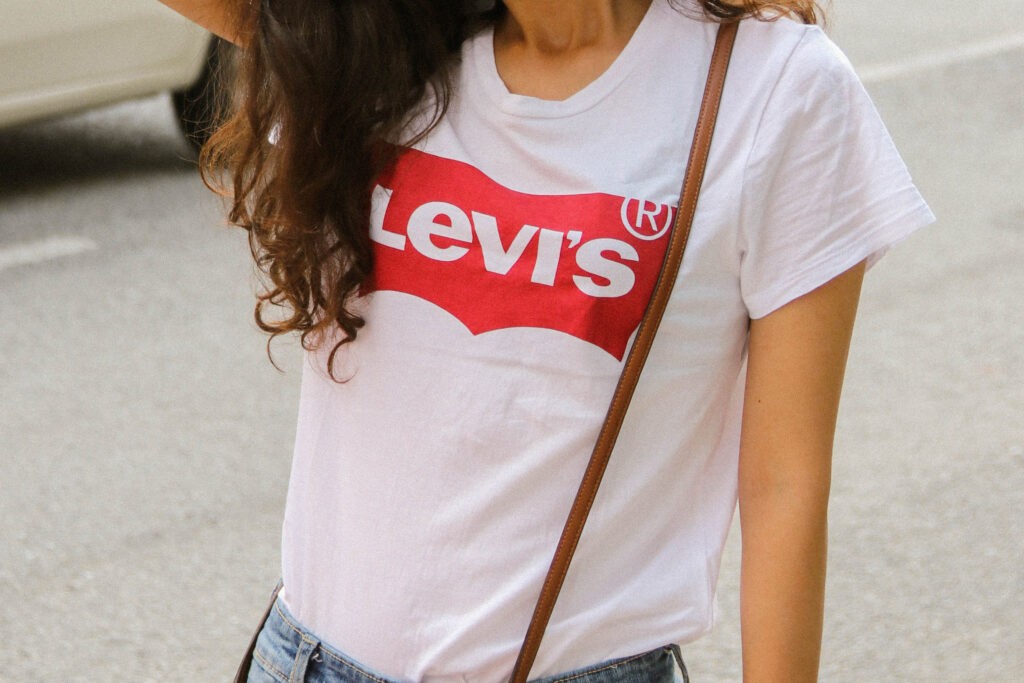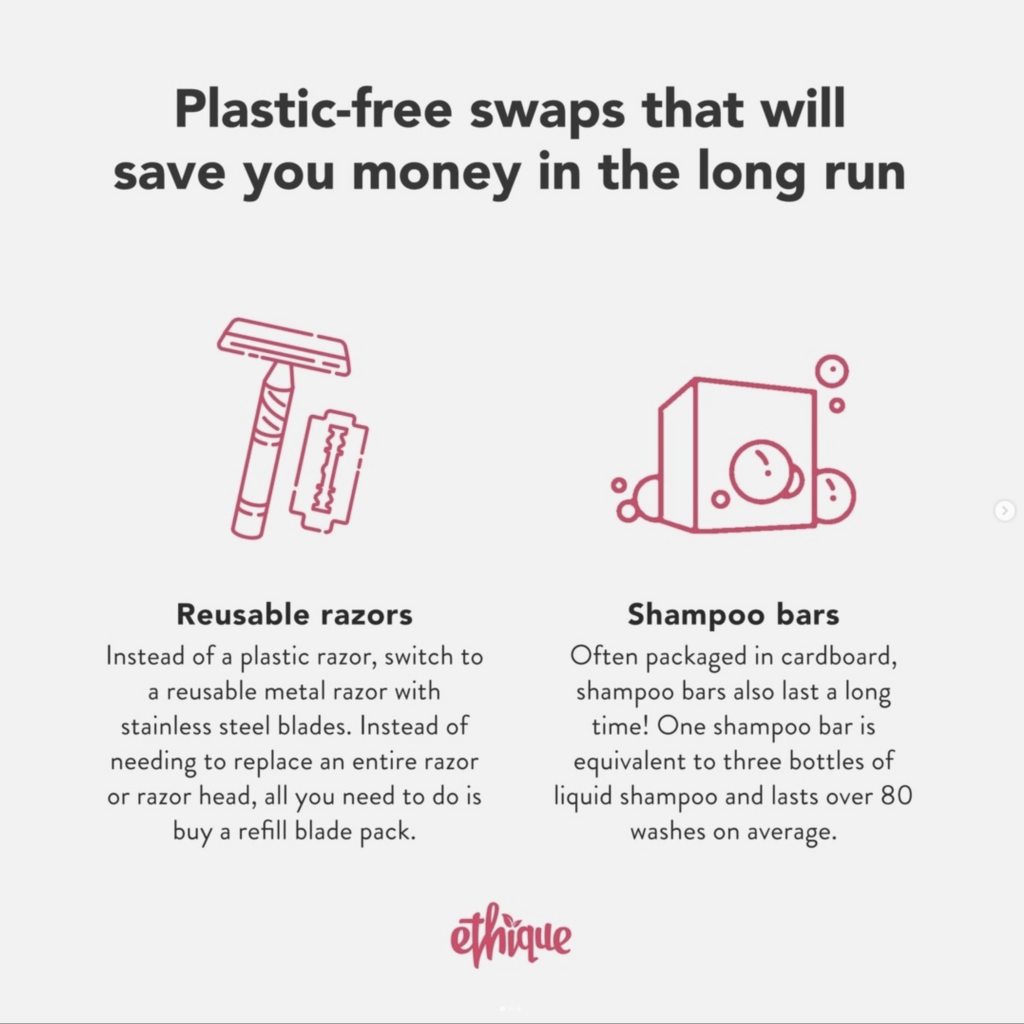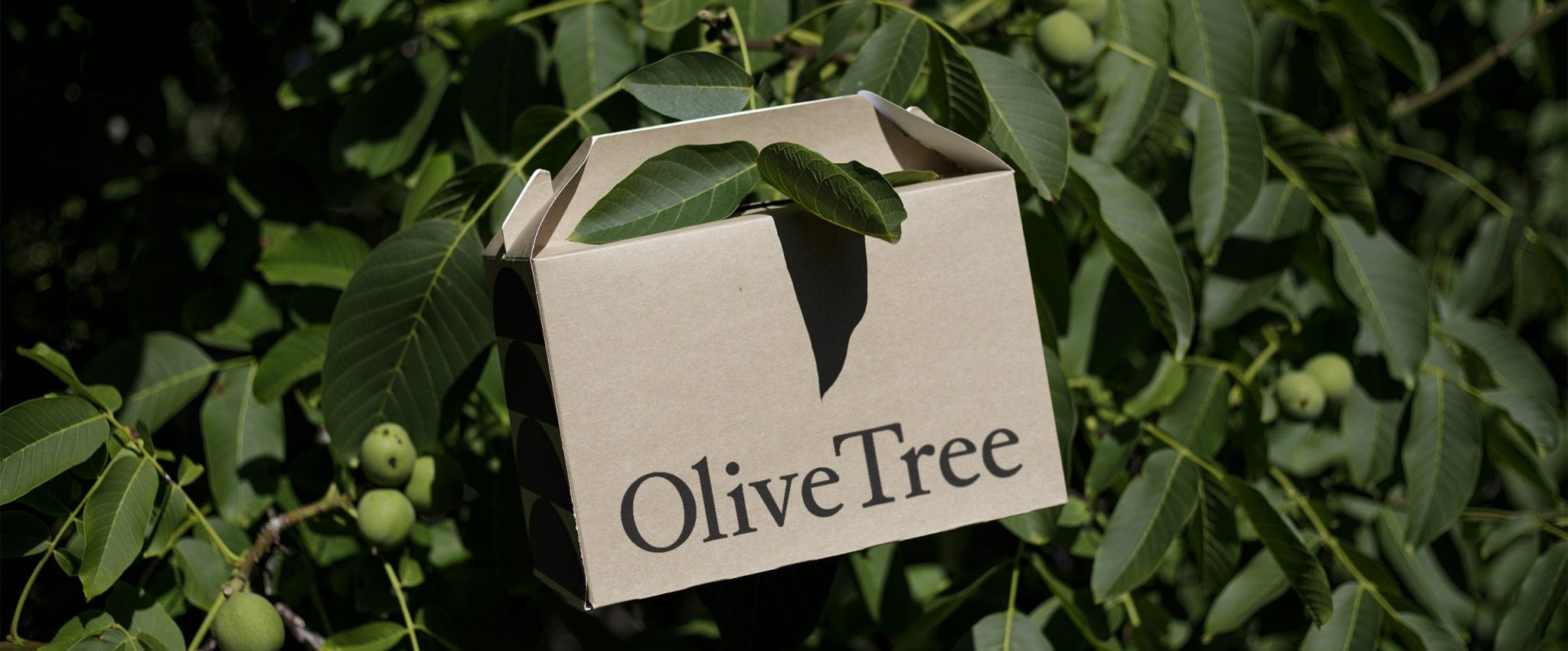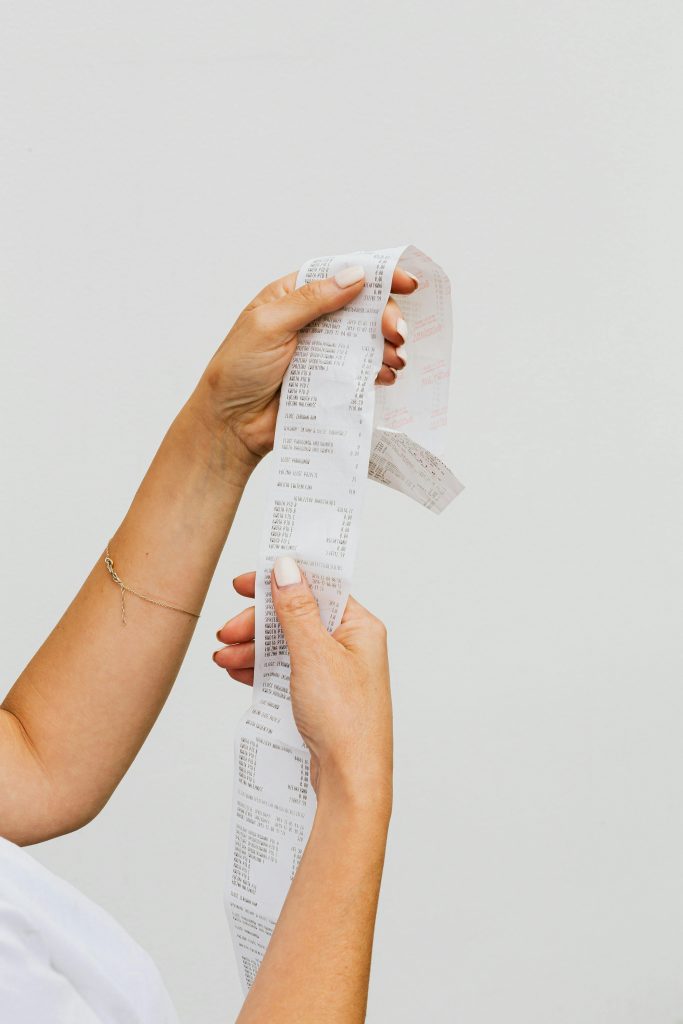Did you know that 81% of consumers believe companies should help preserve the environment? This startling statistic raises one big question: How can companies engage in sustainable branding? I have put together 10 measures—each with actionable steps—companies can take to make sustainable branding a reality.
Recently, I got into a bit of a dilemma. After refreshing my client’s branding, they asked whether they could continue using the old business cards they still had.
From a branding perspective, this is an absolute no-go. But as someone who deeply cares about the environment, it was difficult for me to tell my client to throw out their old business cards.
The situation really got me thinking about sustainable branding.
In fact, brands cannot avoid considering sustainability. Not as long as they keep using limited resources such as paper, ink and fossil fuels.
So, I’ve created this guide on sustainable branding to provide you with practical ideas for integrating sustainability into your brand communications.
But before we get started, let’s understand what sustainable branding means.
What Is Sustainable Branding?
Sustainable branding is an approach to branding that focuses on a company’s commitment to sustainability and environmental and social responsibility.
It involves communicating a company’s sustainability values and highlighting its initiatives towards a more eco-friendly future.
Consumers are increasingly looking to businesses to take the lead in addressing environmental and social issues. So, they want to support companies that align with their values and make an effort to reduce their impact on the planet.
By embracing sustainable branding practices, companies can meet these expectations, build trust and attract new customers.
But careful, sustainable branding goes beyond green-washing.
Sustainability should be firmly rooted in a company’s core beliefs, and therefore, sustainable branding cannot be separated from general sustainable business practices.
Did you know that over 90% of CEOs already consider sustainability a crucial element for their company’s success? So should you.
10 Practical Steps to Sustainable Branding
As I explained, most of these steps may require more than branding efforts. But they can all be integrated into your brand storytelling.
1. Create a Timeless, Well-Designed Visual Identity
Had my client’s logo been well-designed from the start, rebranding would not have been needed.
So, one way to make branding more sustainable is to choose a timeless design that doesn’t become outdated so quickly.
And it’s possible. Companies like Rolex, Ford, Kellogg’s and Levi’s have used their original logos for decades.

To develop a timeless and well-designed identity, you can take the following steps:
- Hire an experienced designer who can create an adaptable and timeless visual identity.
- Consider your brand’s values and personality. A design that reflects these characteristics will remain more relevant in the long term.
- Conduct market research to understand which design elements resonate well with your target audience. Then, build your identity around those elements.
- Avoid short-lived trends that don’t last. Instead, focus on more classic elements at the core of the design.
- Last but not least, your visual identity is not set in stone. Over time, it will develop and change, and that’s okay.
2. Opt for Environmentally Friendly Production of Marketing Materials
67% of consumers think it’s important that the products they buy come in recyclable packaging.
Today, you have many options for choosing environmentally friendly materials for your packaging and printing.
Here are some options to make them more sustainable:
- Use eco-friendly printer inks, such as soy or algae inks.
- Choose biodegradable packaging materials such as corn starch, bamboo or mushrooms. But make sure they actually degrade without the use of chemicals.
- Choose materials with sustainability certificates, such as FSC, PEFC, or recycled materials.
- Go digital whenever you can to reduce printed marketing materials altogether.

Did you know that each tonne of recycled paper can avoid 17 trees, 1,440 litres of oil, 2.3 cubic meters of landfill space, 4,000 kilowatts of energy, and 26,500 litres of water?
3. Prioritise Durable Design
It’s frustrating for consumers and harmful to the planet when products break down quickly. Brands should offer more durable alternatives that produce less waste.
Here are some ideas to do that:
- Use more durable materials, such as metal, glass, or thicker plastics, which are more resistant to wear and tear.
- Encourage your customers to return packaging or opt for reusable options such as glass containers or metal cans, like Dove’s refillable deodorant.
- Consider whether you can sell your product without packaging like Lush. The company sells 66% of its products “naked.”
- Produce products that are easy to repair, for example, with replaceable parts like Fairphone.
- Offer a repair service or take-back programme where customers can return used products to be recycled or reused. Companies like Patagonia, The North Face and IKEA already have such programmes.
- When designing your products, avoid following short-lived fashion trends.
Did you know that only 14% of plastics get collected for recycling?
And this is not just an environmental issue. A whopping 95% of the value of plastic packaging material, worth USD 80-120 billion annually, is lost to the economy that way.
4. Embrace Local Production and Supply Chains
Producing locally instead of importing from overseas will almost certainly reduce the carbon footprint by reducing transportation distances and using local materials.
Brands should produce and source locally whenever possible. Here are some suggestions to do so:
- Source your materials locally to reduce transport emissions.
- Use local production facilities. French footwear company Veja, for example, produces in Portugal specifically for the European market, even though its factories are in Brazil.
- Use eco-friendly transportation like the rail to cut emissions from transportation if local production is not feasible.
5. Collaborate With Sustainable Suppliers
To go green, sourcing materials from responsible suppliers is essential.
Take the example of Allbirds. The footwear brand uses sustainable materials such as wool, eucalyptus and sugar cane and works closely with its suppliers to ensure responsible sourcing.
To follow this approach, consider the following:
- Select suppliers that align with your sustainability values and have appropriate certifications, such as Fairtrade or GOTS.
- Set sustainability requirements for your suppliers, including environmentally friendly materials and fair labour practices.
- Consider the entire supply chain to ensure sustainability from sourcing to the final product.
- Review your suppliers regularly to ensure they continue to meet your sustainability requirements.
- Work closely with your suppliers. Why not develop sustainable products or packaging collaboratively or invest in sustainable initiatives together?
6. Join Forces With Other Ethical Brands
Another way to achieve sustainability is through co-branding or other brand partnerships with like-minded companies.
Here is how to leverage these partnerships:
- Identify brand partners who share your sustainability values and goals.
- Work together to create innovative, eco-friendly products beyond your individual capabilities, like Allbirds and Adidas, who made the Adizero x Allbirds 2.94 kg CO2e, a shoe designed to have the lowest carbon footprint possible.
- Coordinate marketing efforts to promote joint sustainability initiatives and inspire eco-conscious choices.
- Partner with not-for-profits, like Patagonia, which partnered with 1% for the Planet.
7. Reduce your Waste
Brands can reduce their waste by implementing sustainable practices in their operations. Here are some ideas:
- Implement a paperless office with digital communication, data storage and billing.
- Motivate your employees to recycle by providing respective bins and education.
- Optimise your office’s energy consumption with LED lighting and motion sensors. Did you know that a 20% reduction in energy costs can bring the same financial benefit to most businesses as a 5% increase in turnover?
- Reduce water consumption by using water-efficient sanitaryware and promptly address repairs.
- Donate or recycle waste, such as old office furniture.
8. Educate the Consumer
Although many consumers are already well-educated about sustainability, brands can continue to promote sustainable practices and initiatives.
Consider these approaches:
- Position sustainability info on the packaging.
- Use social media and other marketing channels to promote sustainability. Tip: Take advantage of useful resources on social media marketing trends to maximise your engagement and reach.
- Work with sustainability influencers.
- Create educational resources such as videos, blog posts or e-books.
- Host workshops or events on sustainability.

9. Foster a Sustainable Brand Culture
Establishing a sustainable brand culture is important if you want to integrate your values into your company’s actions.
Here are some tips for creating a sustainable brand culture:
- Inform and train your employees about sustainable practices.
- Encourage participation in sustainable practices such as recycling or biking to work. IKEA, for example, supports sustainability through initiatives like providing employees with free bicycles for commuting and charging stations for electric vehicles.
- Set a good example and introduce sustainable practices into your daily work routine. For example, use reusable coffee cups, etc.
- Involve your customers in sustainability initiatives, for example, by offering discounts for those who bring reusable bags.
10. Measure and Optimise Your Sustainability Performance
To make a difference as a brand, you should regularly review and improve the performance of your sustainable branding efforts.
Frameworks such as B-Corp certification can help you do this by setting clear standards for assessing your social and environmental performance.
Here are some steps you can take:
- Conduct regular sustainability audits to identify opportunities for improvement.
- Set specific measurable and time-bound sustainability targets.
- Use sustainability reporting frameworks, like GRI or SASB, to track and report on your sustainability metrics.
- Communicate your sustainability performance to your stakeholders.
- Use the data to improve your efforts continuously.
The Future of Sustainable Branding
The future of sustainable branding looks bright. More and more consumers are looking for environmentally friendly products and are willing to pay more for them.
Meanwhile, more companies recognise the importance of sustainability. They create positions such as chief sustainability officer and publish sustainability reports to appeal to their stakeholders and consumers.
Many companies already invest heavily in sustainable branding and gain a competitive edge in the marketplace.
I find it exciting to watch this positive trend towards sustainable branding.
I predict that sustainability will become the norm, and brands that don’t prioritise it will fall behind.
It’s time for companies to take action and embrace sustainable practices to create a better future for everyone.
I might sound a bit romantic, but brands can make a difference when governments fail.
For a number of years, we’ve tracked the shift away from wasteful spending and toward a more mindful approach to consumption, but what we’re seeing now is much more proactive and hands-on. People aren’t just choosing Brand A over Brand B because it’s produced closer to home or treats its workers better. They're getting involved in the consumption cycle by contributing to the funding or even the creation of products they want and by reselling or renting out their unneeded possessions.
—Andrew Benett[4]
A Sustainable Brand Example: Little Yellow Bird
Instead of the usual examples, such as Patagonia or Lush, let me introduce you to Little Yellow Bird—a New Zealand-based clothing company setting a new standard for sustainability.
I had the pleasure of meeting the company’s founder, Samantha, and I’ve been following Little Yello Bird’s journey ever since.
Little Yellow Bird relies 100% on organically grown cotton and employs environmentally friendly techniques when weaving and dyeing cotton.
The company’s products, mainly workwear, are made in factories that adhere to ethical standards—fair wages, safe working conditions, and no forced or child labour.
But the company doesn’t stop there. Little Yellow Bird has created a “Circularity Program,” so clothing doesn’t end up in landfills at the end of its life cycle but is made into new fabrics.
In addition, Little Yellow Bird has also incorporated numerous smaller measures, such as eco-friendly packaging, carbon offsetting, and donating a percentage of their profits to social and environmental causes.
To return to sustainable branding, Little Yellow Bird communicates these efforts through most of its brand touchpoints, such as its website and social media platforms.
This creates a brand that resonates deeply with its customers’ values.
Little Yellow Bird stands out from other companies because it genuinely embodies sustainability. Its commitment to sustainability goes beyond just communication; the company genuinely cares about making a difference.
This is also reflected in its “Best for the World” B Corp award, which places it in the top 5% of all B Corps for its overall impact on workers, community, customers, and the environment.
Summary
To sum it up, sustainable branding is both possible and necessary.
You can advocate for sustainability without jeopardising your brand. In reality, doing so will enhance it.
Sustainable branding goes beyond greenwashing. Merely claiming to be eco-friendly isn’t enough. Brands need to integrate sustainability into every aspect of their operations, and failing to do so risks eroding consumer trust.
If you enjoyed this article, you might also like Brand Storytelling: How Companies Can Leverage Our Love for Stories and learn how to tell a compelling narrative about your sustainability efforts.
Title image: Mockup from Mockupcloud (affiliate link)
References
[1] Image by Rosesh Bhandari on Unsplash
[2] Image source: It’s nice that. Algae offset ink replaces petroleum-based pigments in Patagonia’s printed city guide.
[3] Image Source: Ethique
[4] Jennifer Elks. Sustainable Brands. Havas:
‘Smarter’ Consumers Will Significantly Alter Economic Models and the Role of Brands.






